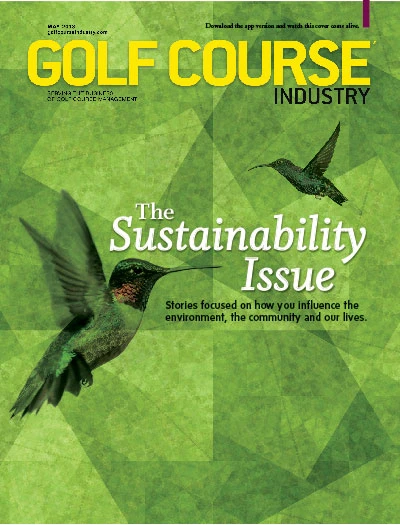 When the legendary architect Perry Maxwell set out to design a golf course in the middle of the rolling prairies of Hutchinson, Kan., he visualized a supremely natural routing, one that would have a distinct links feel to it. Mules and horses moved soil and men worked by hand, scraping and forming the first nine holes.
When the legendary architect Perry Maxwell set out to design a golf course in the middle of the rolling prairies of Hutchinson, Kan., he visualized a supremely natural routing, one that would have a distinct links feel to it. Mules and horses moved soil and men worked by hand, scraping and forming the first nine holes.
When Maxwell’s son, Press, added a new nine in 1957 to the original 1937 layout, he stayed true to his father’s traditional course design, except this time he had more modern equipment at his disposal. So, it was in keeping with the history of Prairie Dunes that superintendent P. Stan George has maintained the natural look and feel of the course.
“Our program consists of burning all appropriate natural areas on a five-year schedule,” he says. “We have more than 250 acres of natural prairie, much of which is contained in the golf course proper. Obviously, we have much more prairie than managed playing surface.” Also, they use targeted mowing, target spraying and manual removal of invasive species in its management program.
The natural areas, i.e. prairie, have always been a part of the charm of playing at Prairie Dunes, says George, calling the areas “an important, appreciated and almost sacred part of the golfing experience here.” Thus, the efforts to maintain the course as it was originally designed; to not stand apart from the surrounding environment, but to be almost a part of it. The course has relied since its origins on the natural prairie, wind, design, and undulating greens to challenge players.
Said George, “Obviously, the natural areas were on-site originally, and they have never been seeded or re-established in large measure at any time. Mother Nature takes care of most issues with the exception of the management practices cited.”
There is little cost involved in maintaining the natural areas. “We have minimal costs for spraying, mowing, etc. and they are included in the operating budget and not tracked as independent costs,” George says.
There were some initial challenges with the burning program that was begun in 1993. “As you might imagine, the golf course had a drastically different appearance for a few weeks after the burn.” However, re-growth was quick enough with flowers and grasses, and the program’s benefits were rather quickly realized. Since the native areas have such an impact on aesthetics, playability (and scoring), there was also some concern regarding tournaments conducted shortly after the prescribed burns and before significant re-growth could impact wayward shots. As it turned out, tournament scores (a Big 8 Championship in early 1990’s and later Big 12 Championships) were not noticeably affected during years that native areas was burned compared to non-burn years.
George adds, “The vast majority of the membership understands and appreciates the necessity of our programs.” While it is not tracked, it is believed maintaining Prairie Dunes’ natural areas has enhanced wildlife habitat, while significantly diminishing the encroachment of invasive species.
The club’s efforts at maintaining the natural look and feel of Prairie Dunes has been widely appreciated. “The community generally recognizes Prairie Dunes as an organization that is serious about prairie renovation and prairie preservation and all of the benefits that come with this program” he says.
George would like to burn more often, but it’s difficult due to the amount of play the course receives and the tournaments and other events it hosts on an annual basis. “The program has restored many acres to a more native prairie while enhancing the integrity of the golf course.” Just as Perry Maxwell envisioned it when he first gazed at the site for Prairie Dunes Golf Club.
Get curated news on YOUR industry.
Enter your email to receive our newsletters.
Explore the May 2013 Issue
Check out more from this issue and find your next story to read.
Latest from Golf Course Industry
- LOKSAND opens North American office
- Standard Golf announces new product lineup for 2025
- The Salt Pond taps Troon for management
- KemperSports selected to manage Swansea Country Club
- From the publisher’s pen: Grab that guide
- Introducing our April 2025 issue
- South Carolina leaders honor golf course superintendent
- One and only







